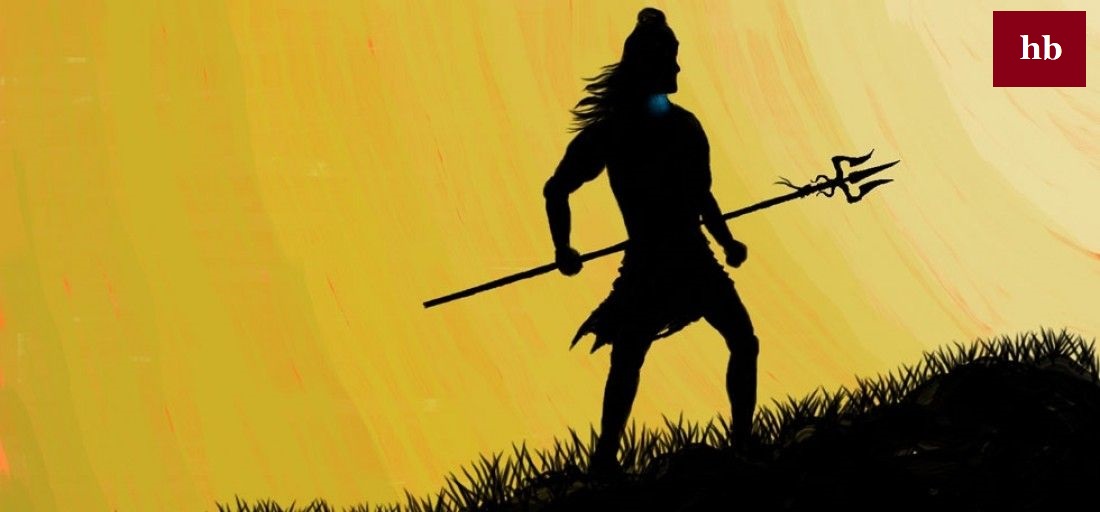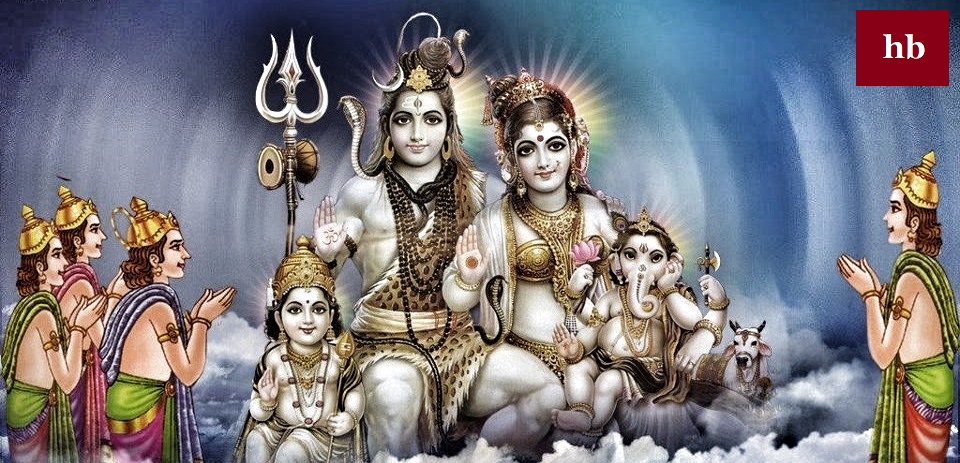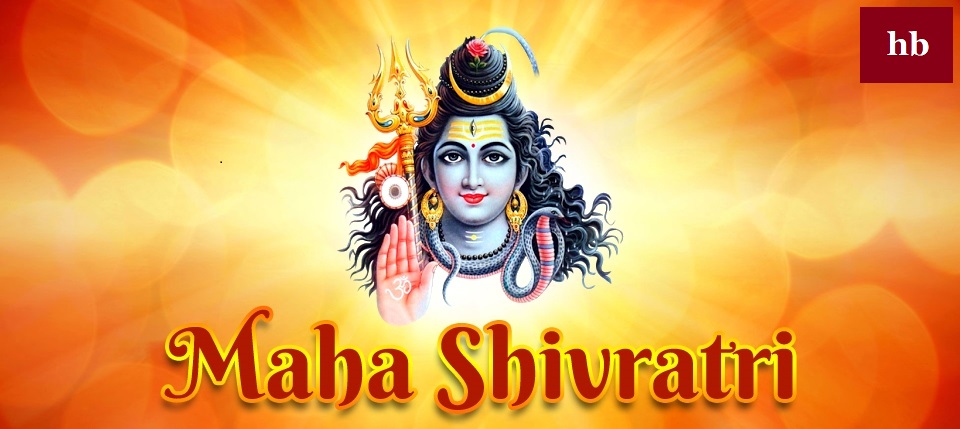Story of lord Shiva and his birth

Story of lord Shiva
Lord Shiva - the God of Almighty Powers - As we all know that teachings are important for human beings in their whole life. In short he is the entire galaxy or universe
absorbed in the human beings. Everything that exist on earth comes from
Lord Shiva and goes back to Shiva. Lord Shiva is perhaps
the most complex of Hindu creator and one of the most powerful god who had so many names such as Mahadeva, Mahayogi, Pashupati,
Nataraja, Bhairava, Vishwanath, Bhava, Bhole Nath. Planets, Moons, Suns, Stars, Planetary System, and entire Galaxies are just a
small happening- a sprinkling. The rest is vast emptiness, nothingness.
Who is Lord Shiva?
According to Hindu Mythology, Shiva is the Supreme Being who creates, protects and transforms the universe. Lord Shiva is the most
important one in the Holy Trinity. Shiva is revered along with
lord Vishnu and
lord Brahma. A goddess is considered to be the energy and
creative power (Shakti) of each, with
maa Parvati the equal supportive partner of Shiva.
Lord Shiva is both the void and matter which
neither can be produced nor can be destroyed. However he is one of the five equivalent Avatar in Panchayatana puja of the Smarta
tradition of Hinduism.
Various Avatars of Lord Shiva
- Bhairava Avatar
When both Lord Brahma and Lord Vishnu had a fight over superiority then Lord Shiva took this avatar. When Lord Brahma made a
false promise about his superiority, Shiva took the form of Bhairava and cut off Lord Brahma's fifth head.
- Nandi Avatar
The mount of Lord Shiva is Nandi or the great bull.In many parts of India Lord Shiva is worshipped in the form of Nandi.
The Nandi avatar of Lord Shiva is seen as the protector of the shepherd. It is also the vehicle for the lord Shiva.
- Veerbhadra Avatar
Lord Shiva became extremely furious when goddess Sati burned herself at the Daksha yagna, Lord Shiva plucked a hair seashore
from His head and threw it on the ground.
- Hanuman Avatar
In Hindu mythology, it is believed that “PavanPutra” Hanuman is the eleventh avatar of Lord Shiva. Several texts present him
as an epitome of the god Shiva. The son of Anjana and Kesari Hanuman, blessed by the Hindu God of wind, Vayu,
lord Hanuman is
celebrated for his devotion to Lord Rama.It is said that Lord Shiva took birth in the form of Hanuman to serve Lord Vishnu in
the form of Ram.
- Brahmachari Avatar
Lord Shiva took this Brahmachari Avatar to test Goddess Parvati when she was praying to Him to get Lord Shiva as Her
husband.
- Durvasha Avatar
Lord Shiva took the form of Durvasha to maintain discipline and peaceful decorum in the Universe. Durvasa was known for being
short tempered.
Different forms of Lord Shiva Mantra

- Panchakshari Shiva Mantra (ॐ नमः शिवाय)
This is the most common Shiva mantra. This mantra means – "I bow to Lord Shiva!" Devotees chant this mantra 108 times to
cleanse their soul and get bestowed by Lord Shiva.
- Rudra Shiva Mantra (ॐ नमो भगवते रुद्राय)
This Shiva mantra is best used to gratify Lord Shiva and it helps the devotees to remove negative things from their life and
boost their confidence to move ahead in their unbalanced life. Devotees chant this Rudra mantra to seek help from Lord Shiva
and to get their wishes fulfilled.
- Gayatri Shiva Mantra(ॐ तत्पुरुषाय विद्महे महादेवाय धीमहि तन्नो रुद्रः प्रचोदयात)
The Gayatri Mantra is the heftiest and believed to have spiritual and psychological power in itself. However, Shiva
Gayatri Mantra is also very powerful and is chanted to seek peace of mind and
appease Lord Shiva.
- Ekadasha Rudra Shiv Mantra
This mantra is an entirety up of eleven mantras. These mantras are utilized to love different types of Lord Shiva.
These mantras are for various months in a year, yet can be discussed together also. Individuals present all these eleven
mantras in Shivratri or amid Maha Rudra Yagnya.The most important attributes of Shiva are:
- 1. The trishul as his weapon.
- 2. The damaru as his musical instrument.
- 3. The adorning crescent moon and the holy river Ganga flowing from his matted hair.
- 4. The snake Vasuki around his neck.
- 5. An awaiting and patient Nandi.
- 6. His tiger skin clad body.
- 7. The third eye on his forehead.
What does the line indicates on his forehead?

Shiva has three lines of fiery remains spread on his temple in a level introduction. The lines speak to the annihilation of the
three universes of Hinduism. It gives a thought that inactivity and absence of energy alludes to the union of the three
universes to end up one with the self.
Goddess Parvati – The Mother of the Universe
Maa Parvati dependably lives with God Shiva as his Shakti, which means 'Power'. She is known for presenting insight and gracing her
aficionados to accomplish association with their particular master. The Shakti vogue is the idea of God as the Universal Mother.
Shakti is alluded to as Mother, since that is the part of the Supreme in which she is viewed as the sustainer of the universe and
maintains everything in presence.
Shiva Linga: The Symbol of Shiva
In Sanskrit, Linga symbolize a "mark" or a symbol, which points to an inference. Thus the Shiva Linga is a symbol of
Lord Shiva: a
mark that reminds of the Omnipotent Lord, which is formless.
The symbol of Shiva, Shiv Linga propose an idea to the Hindu devotee in the unmistakable language of silence. It is only the outward
symbol of the
formless being, Lord Shiva, who is the undying soul seated in the chambers of your heart. Lord Shiva is your in-tenant, your
deepest self or Atman, and who is indistinguishable with the incomparable Brahman.
The Holiest Shiva Lingas of India
If we are talking about all Lingas in India, a few stand out as holding the most importance. The temple of Lord Mahalinga at Tiruvidaimarudur
also known as Madhyarjuna, is regarded as the great Shiva temple of South India.
In India, there are
12 Jyotirlingas and five Pancha-bhuta Lingas which adds smell to our Indian Culture.
12 Jyotirlinga:
Kedarnath,
Kashi Vishwanath,
Somnath,
Baijnath,
Rameswaram,
Grishneshwar,
Bhimshankar,
Mahakal,
Mallikarjun,
Omkareshwar,
Nageshwar, and
Tryambakeshwar
Pancha-bhuta Lingas: Kalahastishwar, Jambukeshwar, Arunachaleshwar, Ekambareshwar of Kanjivaram, and Nataraja of Chidambaram.